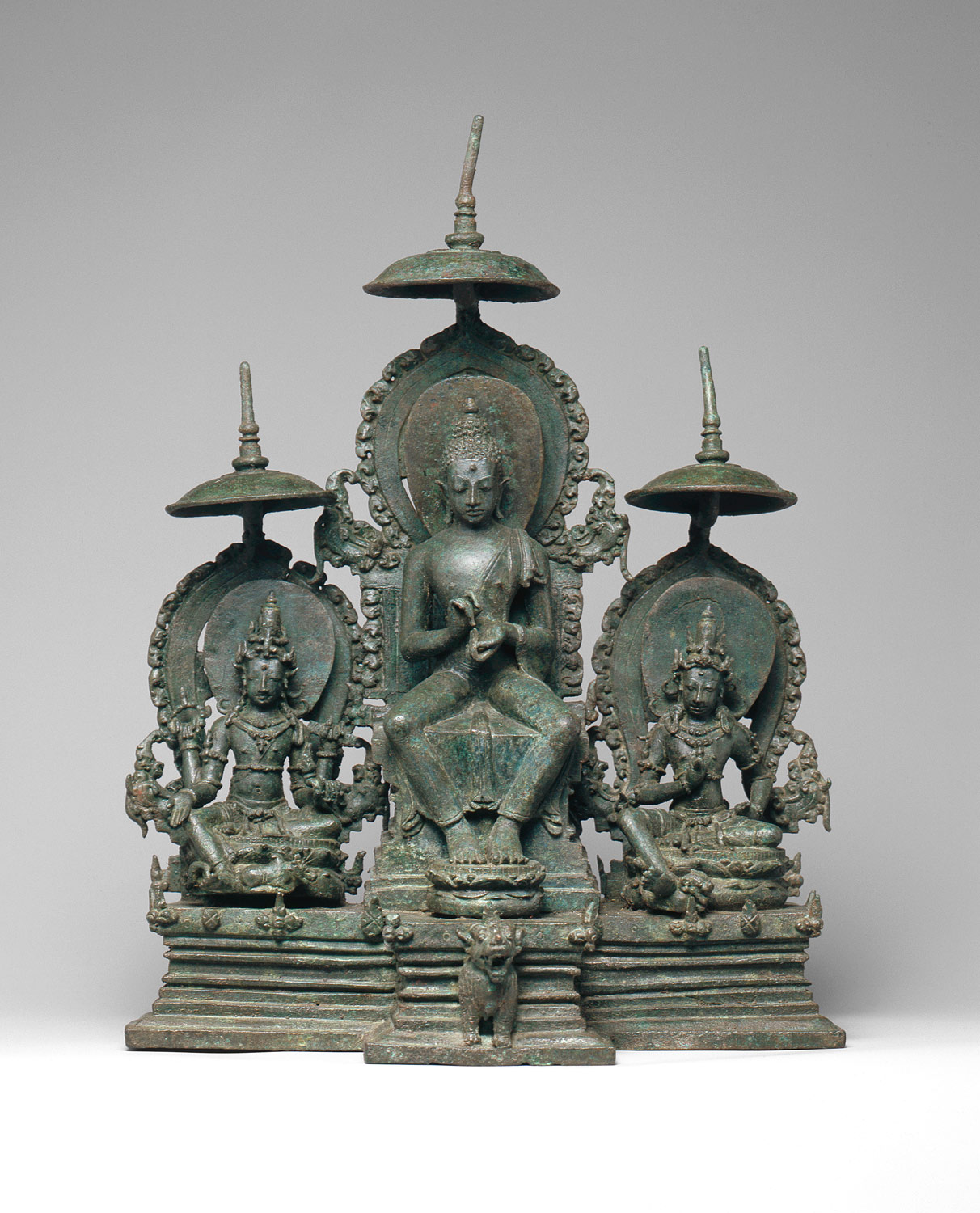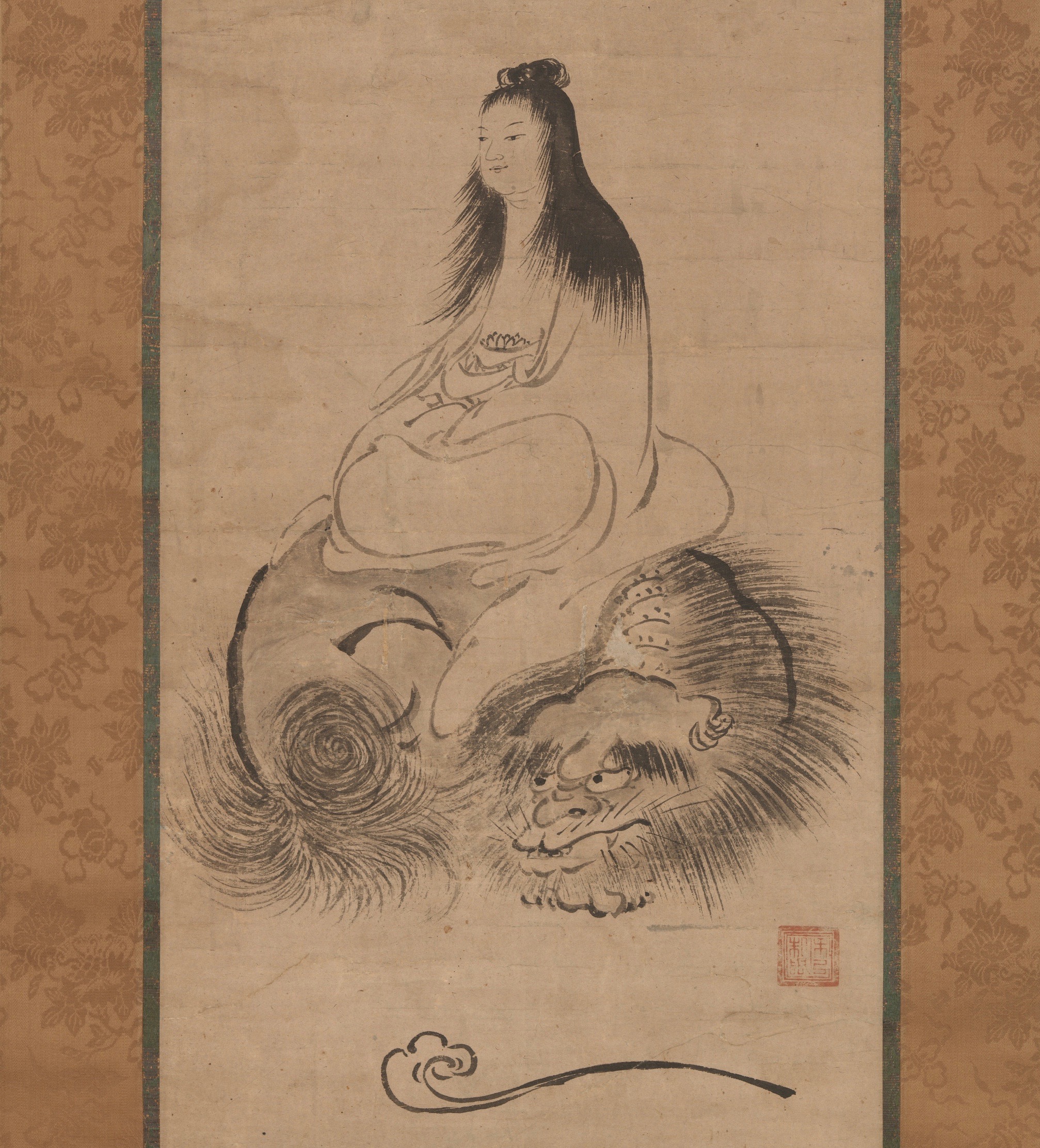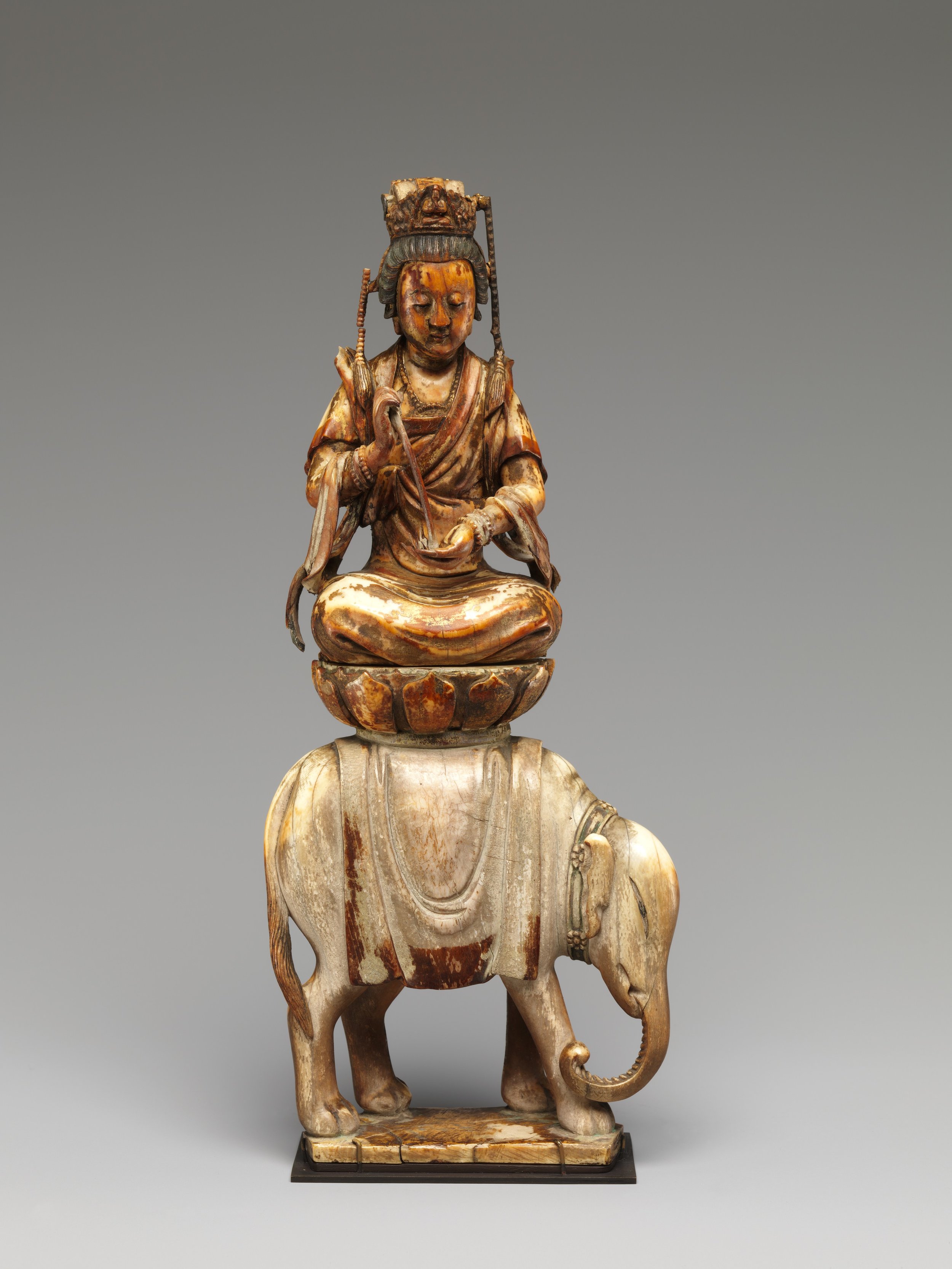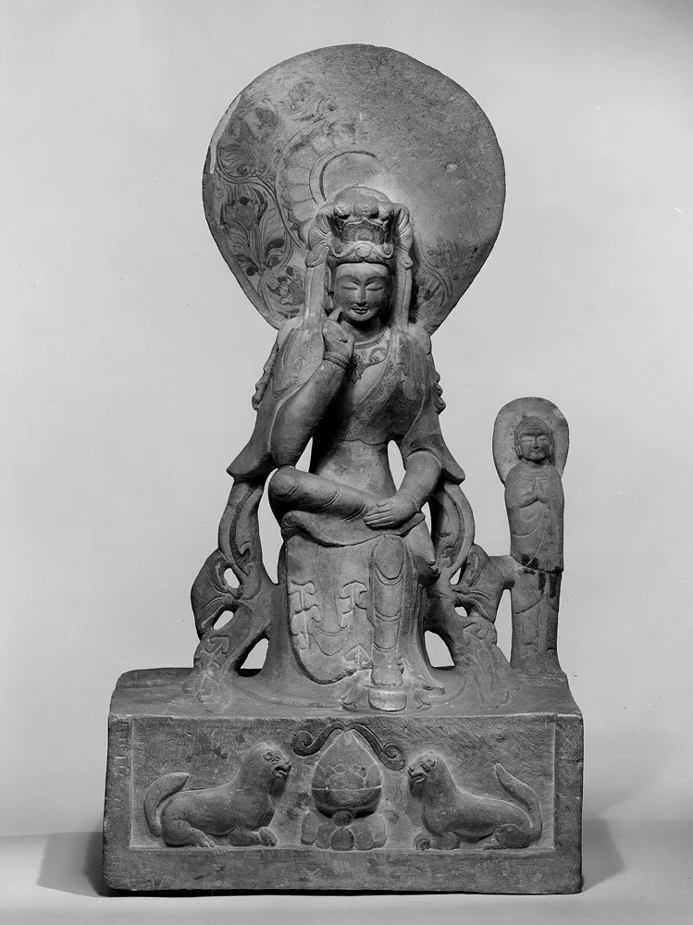What is a Bodhisattva?
Kneeling Attendant Bodhisattva. From Mogao Cave 328. Late 7th century. Dunhuang. Image courtesy of the Harvard Art Museums.
In Sanskrit, bodhisattva roughly means: "being who intends to become a buddha."
In the Theravada tradition of Buddhism, the Buddha referred to himself as bodhisattva during all of his incarnations and lifetimes before he achieved enlightenment. It was only after he achieved buddhahood that it became proper to refer to him as the Buddha.
In the Mahayana tradition of Buddhism, a bodhisattva is any being who intends to achieve enlightenment and buddhahood.
[...] Western literature often describes the bodhisattva as someone who postpones his enlightenment in order to save all beings from suffering [...] by choosing this longer course, he perfects himself over many lifetimes in order to achieve the superior enlightenment of a buddha at a point in the far-distant future [...]
~ The Princeton Dictionary of Buddhism, edited by Robert E. Buswell and Donald S. Lopez. Page 134.
In Buddhist artistic traditions, there are many archetypal bodhisattva figures who appear repeatedly. In this article we will look at five of them.
These specific bodhisattva figures may be depicted as either male or female, depending on the geographic context and the iconographic traditions of that culture.
Padmapani and Vajrapani in Ajanta Cave 1. 450-500 CE. Maharashta, India.
Pictured above are paintings of two archetypal bodhisattva figures in the Ajanta Caves in Maharashta, India. These figures flank a statue of the Buddha.
The one on the left is named Padmapani, and the one to the right is named Vajrapani.
Enthroned Buddha Attended by the Bodhisattvas Avalokiteshvara and Vajrapani. Second half of the 10th century. Early Eastern Javanese period. Indonesia. Image courtesy of The Met.
Shown above is another artwork from Indonesia featuring the same theme. The Buddha sits in the center flanked by the two bodhisattvas: Padmapani on the left and Vajrapani on the right.
Avalokitesvara
Padmapani is another name in Sanskrit for Bodhisattva Avalokitesvara, who represents the compassion of all of the Buddhas.
In China, the Bodhisattva Avalokitesvara goes by the name Guanyin. Chinese art often depicts Avalokitesvara as female.
Guanyin, also known as the Bodhisattva Avalokitesvara, or “The Perceiver of Sounds.” Mogao Cave 57 at Dunhuang, China. Photo courtesy of the Dunhuang Academy.
Vajrapani
The Bodhisattva Vajrapani represents the power of all the Buddhas, and he protects the Buddha. Below he is depicted wielding a lightning-bolt scepter in his left hand.
Vajrapani. Late 6th-7th century. Kashmir. Image courtesy of The Met.
Thanks to cultural contact between the Kushan Empire and what is today northern India, the Bodhisattva Vajrapani has a strong iconographical relationship with the Greek mythological figure of Hercules as found in Gandharan art.
Shakyamuni Triad. 1565. Joseon Dynasty. Korea. Image Courtesy of The Met.
Besides the bodhisattvas Padmapani and Vajrapani, another pair of popular archetypal bodhisattvas are Manjusri and Samantabhadra.
In the Joseon dynasty painting above, the Buddha sits in the center with Bodhisattva Manjusri and Bodhisattva Samantabhadra at his side. This is called the Shakyamuni Trinity or Triad.
Manjusri
Manjusri is often depicted with a lion, as seen in this peaceful painting by Japanese artist Shuusei.
Monju (Manjusri) on a Lion. Shuusei. Late 15th century. Muromachi period. Japan. Image courtesy of The Met.
The Bodhisattva Manjusri represents the wisdom of all the Buddhas. Sometimes he is depicted holding a sword or a scepter. In China, Manjusri is known as Wenshu, and in Japan he is known as Monju.
Samantabhadra
Bodhisattva Samantabhadra (Puxian). 12th-14th century. Southern Song to Yuan dynasty. China. Image courtesy of The Met.
Samantabhadra is the bodhisattva often depicted with Manjusri. The name Samantabhadra means "Universal Worthy" in Sanskrit. Samantabhadra is associated with meditation.
As seen in the mammoth ivory sculpture above, this bodhisattva is often depicted sitting on an elephant. Much like Avalokitesvara, this bodhisattva is often depicted in a female form in China.
Maitreya
Maitreya. After 599. China. Image Courtesy of The Met.
Another archetypal bodhisattva figure is the Maitreya.
The Bodhisattva Maitreya, or Buddha Maitreya, is the future Buddha who will succeed the Buddha Gautama, the Buddha of the present age.
Further Reading
- Arahants, Buddhas, and Bodhisattvas by Bhikkhu Bodhi
- Asian Art Museum Education: The Bodhisattva Maitreya
- Blog Post: The Buddha
- Blog Post: Buddhism
- Buddha World: Manjusri
- Burmese Art: Samantabhadra
- Himalayan Art: The Three Lords of the World
- Khandro.Net: Manjushri
- The Silk Road Foundation: When Herakles Followed the Buddha
- The Triple Bodhisattvas - Manjusri, Vajrapani, and Avalokitesvara
- ThoughtCo: Maitreya Buddha
- ThoughtCo: Manjusri, the Buddhist Bodhisattva of Wisdom
- ThoughtCo: What's a Bodhisattva?
- Vajrapani Blog: Vajrapani, Manjusri, and Avalokitesvara
- WildMind Buddhist Meditation: Vajrapani
Buswell, Robert E., Donald S. Lopez. The Princeton Dictionary of Buddhism. Princeton: Princeton University (2004).









